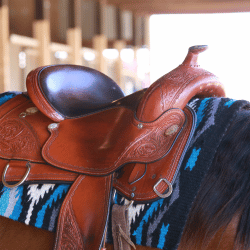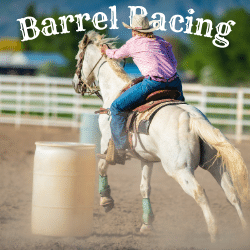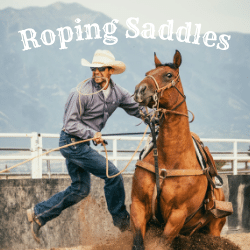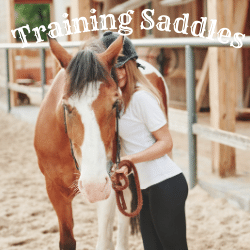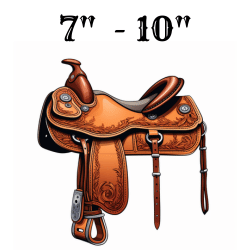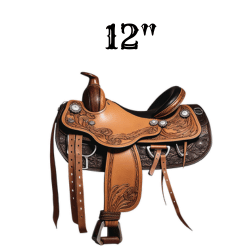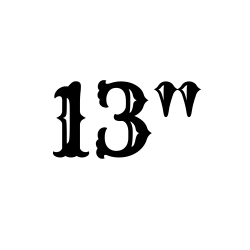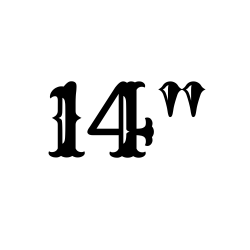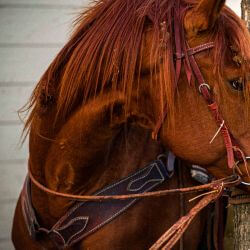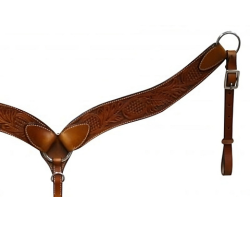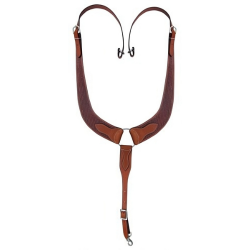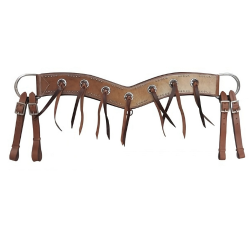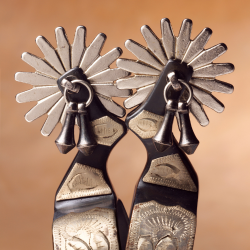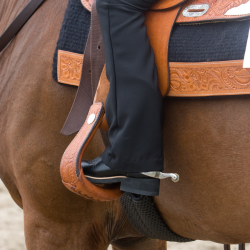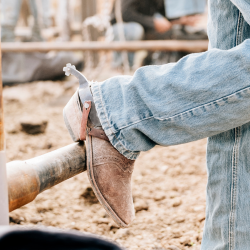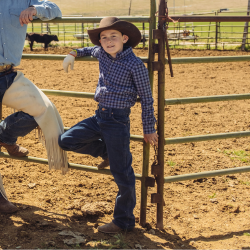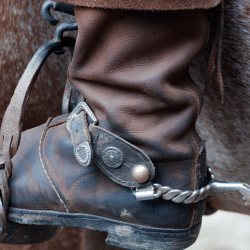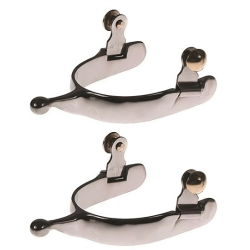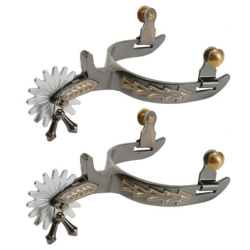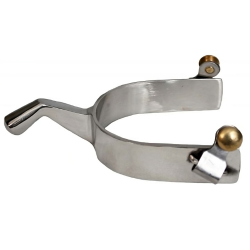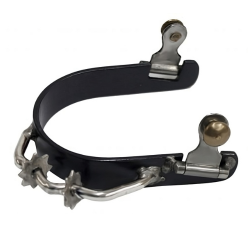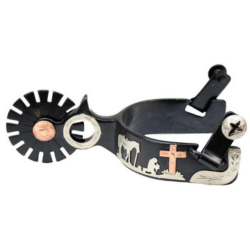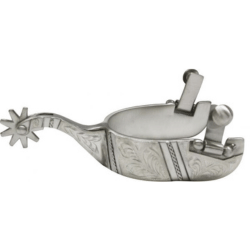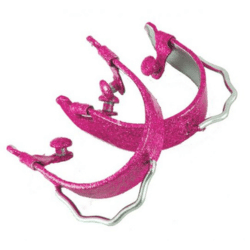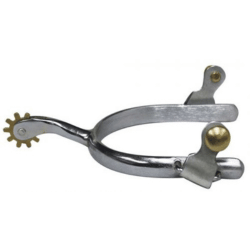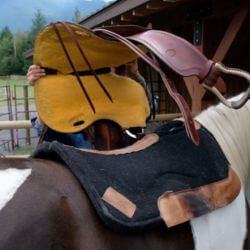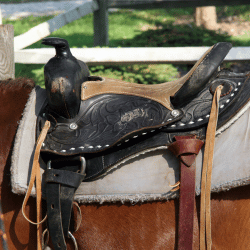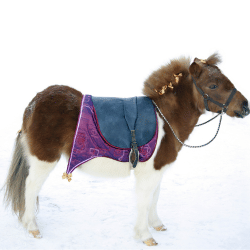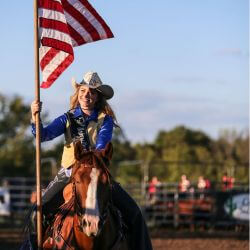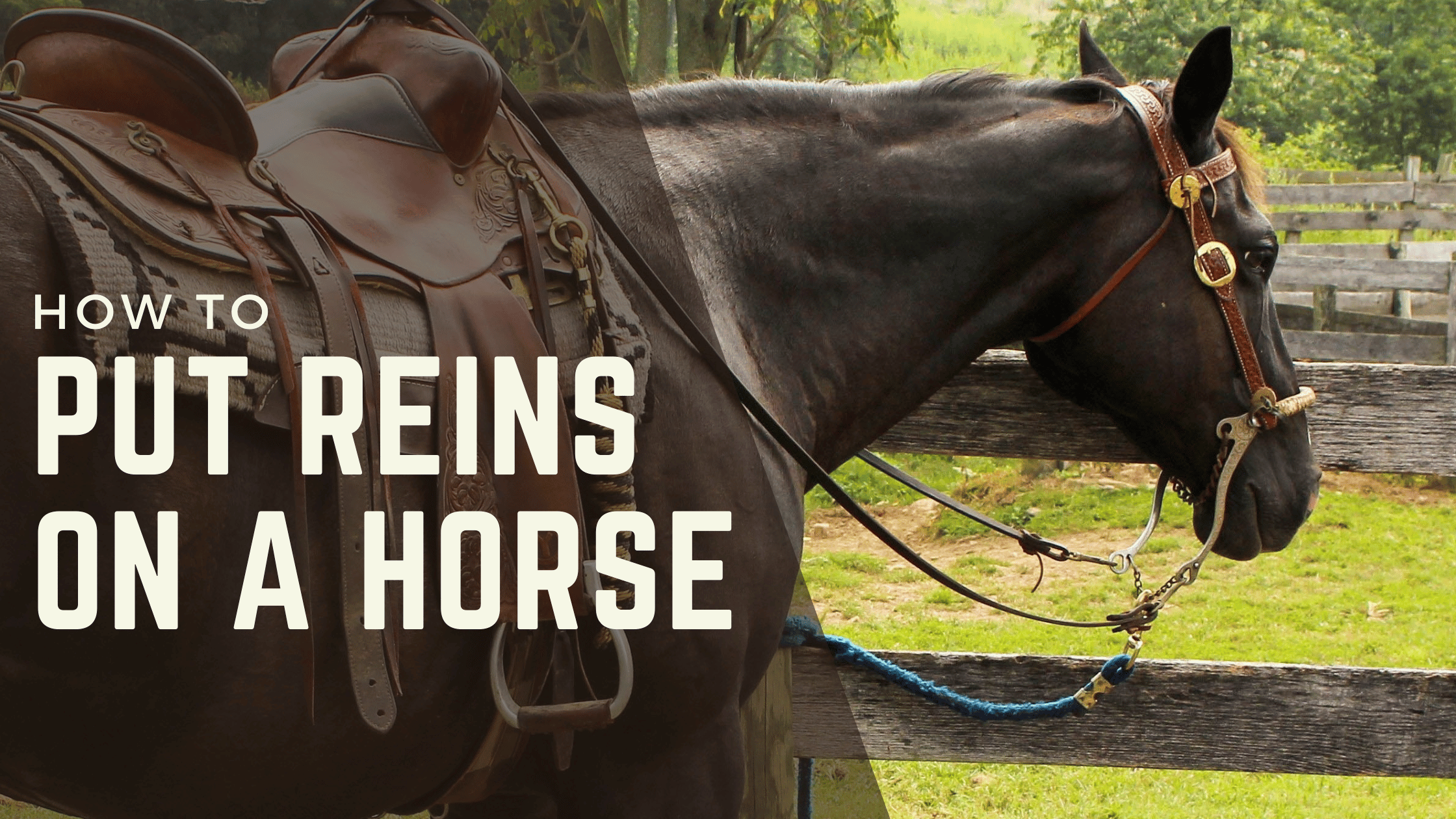Welcome to our latest blog post where we delve into the world of horse reins. Whether you're an experienced equestrian or just starting out, understanding the purpose, types, and proper use of horse reins is essential for effective communication and control while riding.
Horse reins are a crucial part of the bridle and serve as a direct line of communication between the rider and the horse. They provide guidance, direction, and aid in maintaining balance and control during various riding activities. However, with different types of reins available, it's important to choose the right ones for your horse and use them correctly.
In this blog post, we will explore the different types of horse reins, including split reins, romal reins, loop or roping reins, draw reins, and side reins. Each type has its own unique features and uses, and understanding their differences will help you make an informed choice for your horse.
Choosing the right reins for your horse is essential for both their comfort and your control. We will discuss factors to consider, such as your horse's needs and riding style, as well as material considerations, and size and weight factors. By understanding these aspects, you can ensure that you select reins that are suitable for your horse's specific requirements.
Once you have chosen the appropriate reins, it is crucial to know how to use and handle them properly. We will cover basic commands that can be given using the reins, as well as proper grip and hand position. Additionally, we will highlight common mistakes to avoid to ensure clear and effective communication with your horse.
Maintaining and caring for your horse reins is vital to ensure their longevity and functionality. We will provide tips on regular cleaning and inspection, as well as how to repair or replace damaged reins. Proper storage techniques will also be discussed to ensure your reins are kept in optimal condition.
Understanding horse reins and their purpose, types, and proper use is fundamental for any rider. By gaining knowledge in this area, you can enhance your riding experience and develop a stronger bond with your horse. So, let's dive in and explore the world of horse reins together!
Introduction to Horse Reins: What They Are and Their Importance
Horse reins are an integral part of the bridle, which is the headgear used to control and guide horses. They are essentially long straps or lines that connect from the bit (the metal mouthpiece in the horse's mouth) to the rider's hands. The reins serve as a direct line of communication between the rider and the horse, allowing the rider to give commands and signals to guide the horse's movements.
The importance of horse reins cannot be overstated. They play a crucial role in maintaining control and direction while riding. By properly using the reins, riders can communicate their intentions to the horse, guiding them through various maneuvers, transitions, and gaits. Reins provide a means of communication and aid in achieving balance, collection, and responsiveness from the horse.
Horse reins are not only essential for control but also for building a harmonious partnership between the rider and the horse. Through the reins, riders can establish trust and understanding with their equine partner, creating a cooperative and responsive riding experience. The proper use of reins is vital for maintaining a safe and enjoyable ride for both horse and rider.
It is important to note that reins are just one component of effective communication with a horse. They work in conjunction with other aids, such as leg pressure, seat cues, and voice commands, to create a comprehensive means of communication between rider and horse. However, the reins are often the primary means of control and guidance, making their understanding and proper use essential for any rider.
In the following sections, we will explore the different types of horse reins, how to choose the right reins for your horse, proper use and handling techniques, and tips for maintaining and caring for your reins. By gaining a comprehensive understanding of horse reins, you will be equipped to enhance your riding skills and develop a strong partnership with your horse. So, let's delve deeper into the fascinating world of horse reins!
Different Types of Horse Reins
When it comes to horse reins, there are several different types available, each with its own unique features and purposes. Understanding the differences between these reins will help you choose the most suitable option for your horse and riding style. Let's explore the various types of horse reins:
1. Split Reins
Split reins, also known as Western reins or English reins, are the most common type of reins used in horse riding. They consist of two separate reins that are not connected, allowing for independent movement and control of each hand. Split reins are typically made of leather or synthetic materials and come in various lengths and widths. They are commonly used in Western riding disciplines, such as Western pleasure, cutting, and reining, as well as in some English riding disciplines.
2. Romal Reins
Romal reins are a type of Western reins that consist of a single rein attached to a romal, which is a long braided leather or rawhide attachment. The romal serves as an extension of the rein and is held in one hand, while the other hand holds the rein itself. Romal reins provide a traditional and elegant look and are often used in Western disciplines such as Western pleasure, horsemanship, and Western dressage.
3. Loop or Roping Reins
Loop or roping reins are commonly used in Western disciplines, particularly in roping events. They are made of a single continuous rein with a loop at one end that can be easily adjusted to the desired length. The loop allows the rider to quickly and securely hold the reins, providing a firm grip during intense activities such as roping or working cattle.
4. Draw Reins
Draw reins are a type of reins that are used as a training aid to encourage the horse to flex at the poll and maintain a rounded frame. They consist of long, thin straps that attach from the girth or saddle to the bit, running through the bit rings and back to the rider's hands. Draw reins should be used under the guidance of an experienced trainer, as improper use can lead to incorrect positioning and reliance on the reins for balance.
5. Side Reins
Side reins are a training tool used to encourage proper head carriage and contact with the bit. They consist of two adjustable straps that attach from the girth or surcingle to the bit rings, running vertically alongside the horse's neck. Side reins help to develop balance, suppleness, and engagement of the horse's hindquarters. They are commonly used in dressage and other English riding disciplines, particularly during lunging or longeing exercises.
Understanding the different types of horse reins is essential for selecting the most appropriate option for your horse and riding discipline. Each type has its own benefits and considerations, so take the time to evaluate your needs and consult with a knowledgeable professional to make an informed decision.
How to Choose the Right Reins for Your Horse
Choosing the right reins for your horse is crucial for their comfort and your ability to effectively communicate and control them while riding. There are several factors to consider when selecting reins. Let's explore how to choose the right reins for your horse:
1. Understand Your Horse's Needs and Riding Style
Before choosing reins, it's important to assess your horse's needs and the type of riding you will be doing. Consider factors such as your horse's size, breed, and level of training. Different disciplines may require specific types of reins, so understanding the demands of your chosen discipline is essential. For example, if you are involved in Western riding, split reins or romal reins may be more suitable, while dressage riders often opt for side reins.
2. Material Considerations
Reins are commonly made from various materials, including leather, synthetic materials, or a combination of both. Each material has its pros and cons. Leather reins are durable, offer a traditional look, and provide good grip, but they require regular maintenance and can be affected by weather conditions. Synthetic reins, on the other hand, are often more affordable, easy to clean, and weather-resistant. Consider your preferences, budget, and the specific needs of your horse when choosing the material.
3. Size and Weight Factors
Reins come in different lengths and widths, and it's important to choose the appropriate size for your horse. The length should be proportionate to the size of your horse, allowing for comfortable and effective communication. Additionally, consider the weight of the reins. Heavier reins may provide more stability and contact, while lighter reins can offer greater sensitivity. Experiment with different sizes and weights to find what works best for you and your horse.
4. Consider Rein Features and Adjustability
Reins may have additional features that can enhance their functionality. For example, some reins have buckle or snap attachments for easy attachment and removal. Others may have adjustable sections, allowing you to customize the length or create a looped rein. Consider these features based on your preferences and the specific requirements of your riding discipline.
5. Seek Professional Guidance
If you're unsure about which reins to choose, seeking advice from a knowledgeable professional, such as a trainer or experienced rider, can be invaluable. They can provide insight into the specific needs of your horse and offer recommendations based on their expertise and experience.
Remember, selecting the right reins is essential for the comfort and communication between you and your horse. Take the time to evaluate your horse's needs, consider the materials and features of the reins, and seek professional guidance when necessary. By choosing the appropriate reins, you can enhance your riding experience and ensure effective communication with your equine partner.
Proper Use and Handling of Horse Reins
Proper use and handling of horse reins are essential for clear communication and effective control while riding. Understanding the correct techniques will not only improve your riding experience but also ensure the comfort and well-being of your horse. Let's explore the key aspects of using and handling horse reins properly:
1. Basic Commands Using Reins
The reins serve as a means of communication between the rider and the horse. Understanding the basic commands and cues that can be given using the reins is crucial. These commands include:
- Direct Rein: Applying pressure on one rein to turn or guide the horse in the desired direction.
- Indirect Rein: Applying pressure on the opposite rein to encourage the horse to bend or flex at the poll.
- Half Halt: A combination of an opening rein and a slight closing of the fingers to rebalance and gather the horse's attention.
- Release: Releasing pressure on the reins to reward the horse for a correct response or to allow for relaxation.
It's important to practice these commands in a controlled environment and develop a clear understanding of their application before attempting them while riding.
2. Proper Grip and Hand Position
Having the correct grip and hand position on the reins is crucial for maintaining balance, control, and effective communication. Here are some key points to consider:
- Hold the reins with a relaxed yet firm grip, neither too loose nor too tight.
- Keep your hands slightly above the withers and slightly apart, with thumbs on top and fingers closed around the reins.
- Maintain a straight line from the bit to your elbow, avoiding excessive tension or slack in the reins.
- Keep your wrists aligned with your forearms, allowing for subtle and precise rein aids.
By maintaining a consistent and correct hand position, you can communicate with your horse more effectively and provide clear and consistent cues.
3. Common Mistakes to Avoid
There are several common mistakes riders make when using horse reins. By being aware of these mistakes, you can avoid them and improve your communication with your horse. Some common mistakes include:
- "Piano-Playing" or constant movement of the hands, which can confuse the horse and create inconsistent signals.
- Pulling or applying excessive pressure on the reins, which can cause discomfort and resistance in the horse.
- Holding the reins too tightly, preventing the horse from properly responding to cues and restricting their natural movement.
- Riding with uneven rein tension, which can result in imbalance and lack of clarity in the communication.
It's important to be mindful of these mistakes and work towards maintaining a balanced, relaxed, and consistent rein contact with your horse.
Understanding and practicing proper use and handling of horse reins will lead to clearer communication, improved control, and a more harmonious partnership with your horse. Remember to be patient, consistent, and responsive to your horse's feedback, and always seek guidance from a qualified instructor or trainer to refine your skills. By doing so, you can enhance your riding experience and build a strong connection with your equine companion.
Maintaining and Caring for Your Horse Reins
Proper maintenance and care of your horse reins are crucial for their longevity, functionality, and safety. Regular cleaning, inspection, and appropriate storage techniques will help ensure that your reins remain in optimal condition. Let's explore some key tips for maintaining and caring for your horse reins:
1. Regular Cleaning and Inspection
Regular cleaning is essential to remove dirt, sweat, and debris that can accumulate on your horse reins. Here's how to clean them effectively:
- Start by removing any excess dirt or debris with a soft brush or cloth.
- Use a mild soap or leather cleaner specifically designed for equestrian equipment.
- Dampen a clean cloth or sponge with water and apply the soap or cleaner.
- Gently scrub the reins, paying attention to any areas that may be particularly dirty or stained.
- Rinse the reins thoroughly with clean water to remove any soap residue.
- Dry the reins completely before storing them to prevent mold or mildew growth.
While cleaning, take the opportunity to inspect your reins for any signs of wear, damage, or weak spots. Check for loose stitching, cracks, or fraying that could compromise the integrity of the reins. If you notice any issues, have them repaired promptly or consider replacing the reins if necessary.
2. Repair or Replace Damaged Reins
If you find any damage or wear on your horse reins during the inspection, it's important to address them promptly. Small repairs, such as stitching, can often be done at home using a leather repair kit. However, for more significant damage or if you're unsure about the repair process, it's best to seek professional assistance from a saddler or leatherworker. They have the expertise to repair or replace damaged sections and ensure the reins are safe and functional.
In some cases, if the damage to the reins is extensive or beyond repair, it may be necessary to replace them. While it can be disappointing to part with a favorite pair of reins, your safety and the well-being of your horse should always be the top priority.
3. Proper Storage
Proper storage is essential to maintain the quality and longevity of your horse reins. Here are some tips for storing them correctly:
- Clean and dry your reins thoroughly before storing them to prevent mold or mildew growth.
- Avoid exposing the reins to excessive heat, direct sunlight, or extreme cold, as these can cause damage and deterioration.
- Store the reins in a clean and dry environment, ideally in a tack room or a dedicated storage area.
- Hang the reins or coil them neatly to prevent tangling or kinks.
- Use a bridle bag, reins hanger, or hooks specifically designed for storing horse equipment to keep them organized and protected.
By following proper storage practices, you can prolong the lifespan of your horse reins and ensure they are ready for use whenever you need them.
Taking care of your horse reins is essential for their durability, functionality, and your safety as a rider. By regularly cleaning, inspecting, and repairing or replacing damaged reins, as well as storing them properly, you can ensure that they remain in optimal condition for years to come. Remember, well-maintained reins contribute to effective communication and control with your horse, enhancing your overall riding experience.

